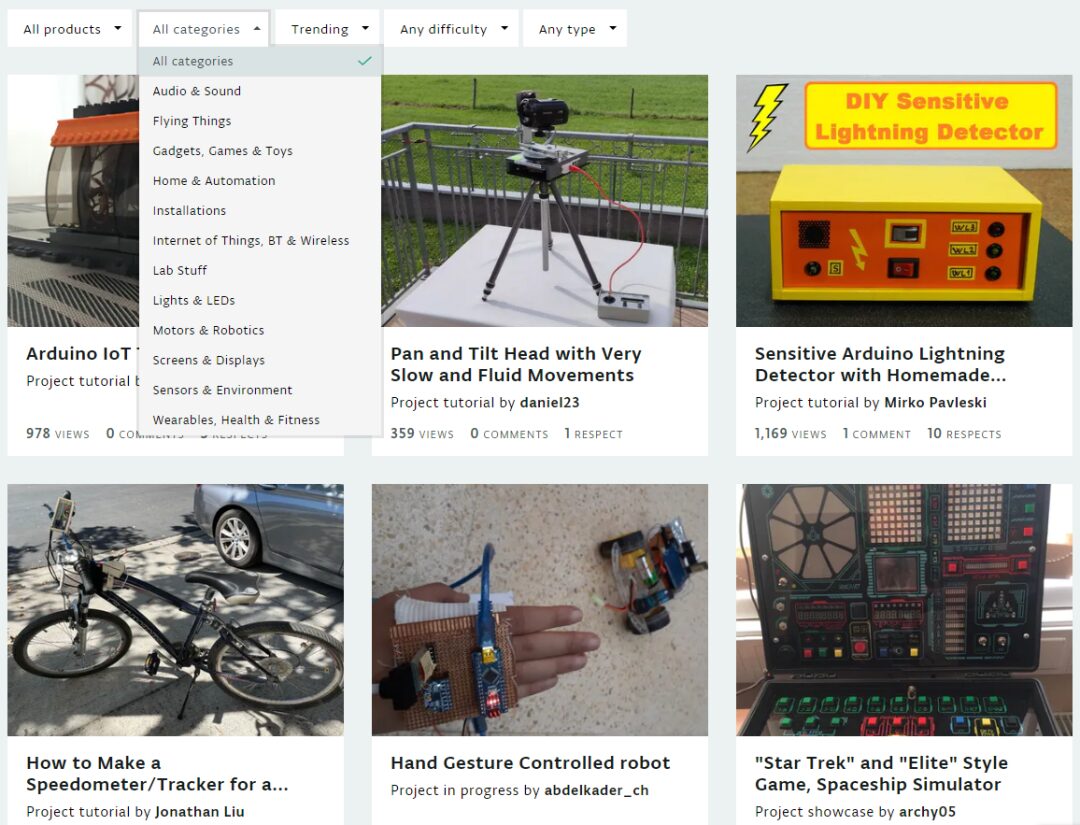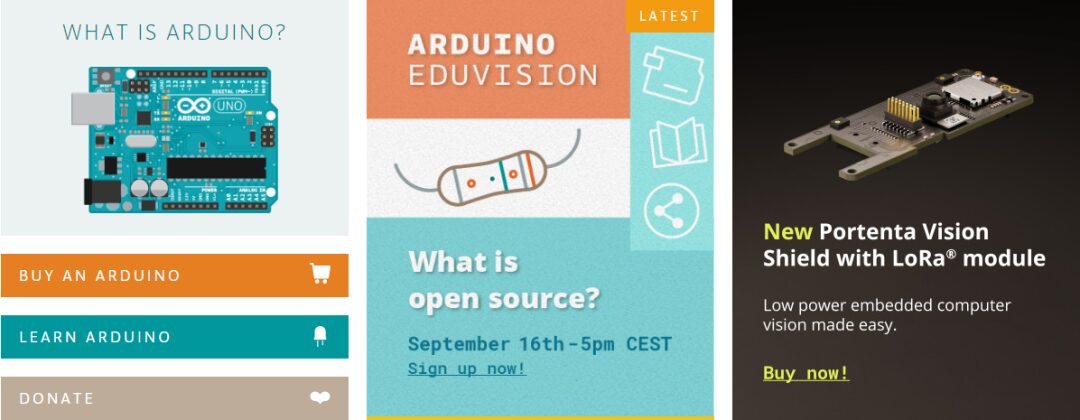
Arduino is an open platform for building electronic projects, consisting of a physical programmable circuit board (commonly referred to as a microcontroller) and a software that runs on a computer, called an IDE (Integrated Development Environment), used to write and upload computer code to the physical board. Unlike most previous programmable circuit boards, Arduino does not require a separate hardware (known as a programmer) to load new code onto the board; it can simply be done using a USB cable. Additionally, the Arduino IDE uses a simplified version of C++, making it easier to learn programming. Arduino provides various standard form factors that break down the functionality of the microcontroller into more user-friendly packages.
Developed in 2005, Arduino is based on an open-source platform, composed of both hardware and software, both of which are open-source. The hardware is a programmable controller with simple input/output (I/O) capabilities (various models of Arduino boards); the software is the Integrated Development Environment (Arduino IDE) installed on the computer. The Arduino boards communicate with the Arduino IDE on the computer via USB connection. Users simply write program code in the IDE, download the program to the Arduino board, and the board executes the operations specified by the program.
Arduino is built on an open-source simple I/O interface and has a development environment using Processing/Wiring similar to Java and C languages. It mainly consists of two parts: the hardware part is the Arduino board that can be used for circuit connections; the other is the Arduino IDE, which is the programming development environment on your computer.
Arduino can perceive the environment through various sensors and control lights, motors, and other devices to respond to and affect the environment. The microcontroller on the board can be programmed using Arduino’s programming language, compiled into a binary file, and burned into the microcontroller.
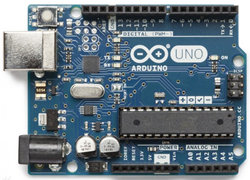
Arduino Uno board physical object
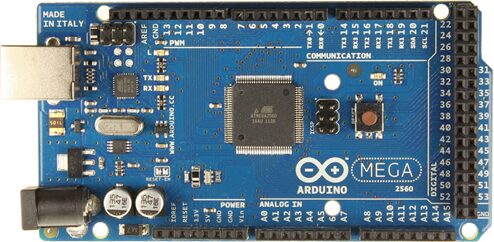
Arduino Mega 2560 board physical object
In embedded development, developers use various development platforms based on different functionalities. As an emerging development platform, Arduino has gained a lot of popularity and usage in a short time, closely related to its design principles and ideas.
Firstly, both the hardware and software of Arduino are open-source, meaning anyone can view and download its source code, diagrams, designs, and other resources, and use them for any development. Users can purchase clone development boards and Arduino-based boards or even make their own development board. However, self-made boards cannot continue to use the name Arduino and must be renamed, for example, Robotduino.
Secondly, like the Linux operating system, open-source also means everyone can download, use, and participate in researching and improving Arduino, which is also the reason for Arduino’s rapid updates. Various electronic enthusiasts around the world have developed interesting electronic interactive products using Arduino. Some have made an automatic weeding machine that cleans the weeds in the garden when they go to work! Others have created a Weibo robot that monitors the status of plants with some sensors and timely sends Weibo reminders to the owner about when to water, fertilize, or weed the plants, which is very interesting.
-
Low Cost– Compared to other microcontroller platforms, Arduino boards are relatively cheap. The cheapest Arduino module version can be manually assembled, and even pre-assembled Arduino modules cost less than $50. -
Cross-Platform– Most microcontroller systems are limited to Windows, while the Arduino software (IDE) runs on Windows, Macintosh OSX, and Linux operating systems. In addition, Arduino has launched a cloud-based development compiler, truly achieving barrier-free development anytime, anywhere. -
Simple, Clear Programming Environment– The Arduino software (IDE) is easy to use for beginners but flexible enough for advanced users to utilize. For teachers, it conveniently uses the Processing programming environment, so students learning to program in that environment will be familiar with how the Arduino IDE works. -
Open Source and Extensible Software– The Arduino software is released as an open-source tool, available for experienced programmers to extend. The language can be extended through C++ libraries, and those who want to understand the technical details can transition from Arduino to the AVR C programming language it is based on. Similarly, you can directly add AVR-C code to Arduino programs as needed. -
Open Source and Extensible Hardware– The plans for Arduino development boards are released under Creative Commons licenses, allowing experienced circuit designers to create their own module versions for extension and improvement. Even relatively inexperienced users can build breadboard versions of the modules to understand how they work and save costs.
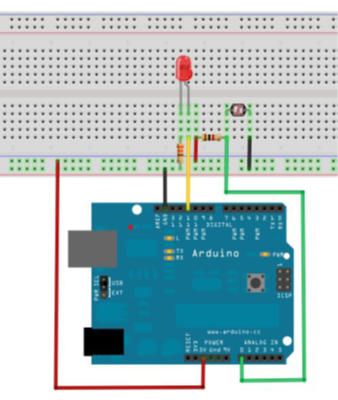
Arduino can connect to various input and output devices such as LEDs, matrix displays, motors, various sensors, buttons, Ethernet cards, and anything that can output or input data or be controlled. There is a wealth of resources available on the internet, with various cases and materials to help users quickly create the electronic devices they want.
In terms of applications, Arduino breaks through the limitations of traditional interaction relying on external devices like keyboards and mice, allowing for easier interaction between two or more people, and can interact with Arduino through applications like Flash and Processing.
